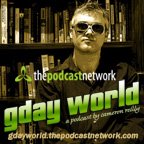 "300 is a 2007 epic film adapted from the graphic novel 300 by Frank Miller about the Battle of Thermopylae. The historical fantasy is directed by Zack Snyder with Frank Miller attached as an executive producer and consultant. 300 stars Gerard Butler, Lena Headey, Rodrigo Santoro and David Wenham. The film is slated for a March 9, 2007 release."
"300 is a 2007 epic film adapted from the graphic novel 300 by Frank Miller about the Battle of Thermopylae. The historical fantasy is directed by Zack Snyder with Frank Miller attached as an executive producer and consultant. 300 stars Gerard Butler, Lena Headey, Rodrigo Santoro and David Wenham. The film is slated for a March 9, 2007 release."Source: Wikipedia
Official site:
300themovie.warnerbros.com
Trailers:
300 - Apple
Blogs:
300 - Cinematical
300 - Advertising/Design Goodness
Books:
The Greek and Persian Wars 500–323 BC - Osprey Publishing
The Spartan Army - Osprey Publishing
The Persian Army 560–330 BC - Osprey Publishing












